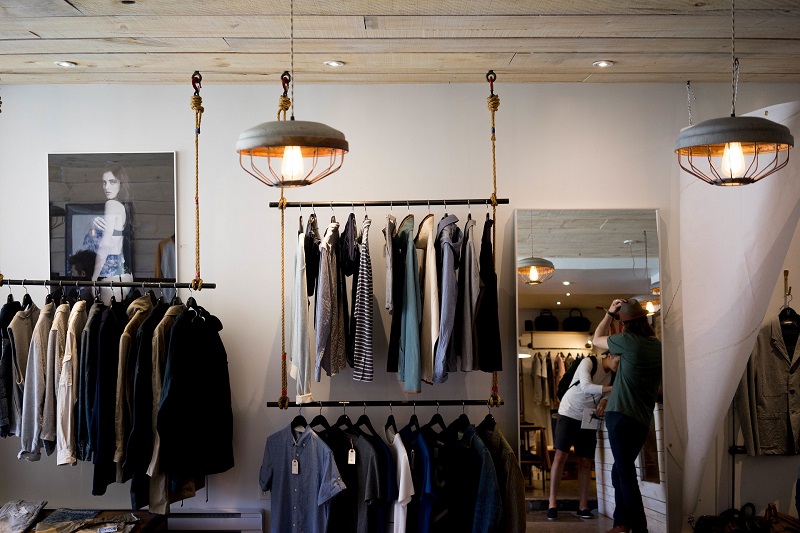When it comes to lighting, businesses have more to think about. At home, people often just shop for a bulb that can fit the fixture they need a bulb for and call it a day. Businesses need to consider a few different things like how much energy is used, how much light is put out, and how they can use that light to help sell their products. There are different types of lighting used in retail locations and each one has a purpose.
It’s simple to understand the different types of lighting used in retail locations and once you understand it, you can take advantage of it.
Types of Lighting Used in Retail Locations | Decorative Lighting
Starting off easy we have decorative lighting. Decorative lighting is lighting that does not serve a purpose besides looking pretty. Retail stores have used decorative lighting in an art form or as a draw into their store. Not every retail location needs decorative lighting, it all depends on the look you are trying to portray to your customers. Most often, decorative lighting comes in the form of a quote or play on words in neon lights. There are also fixtures that can be considered decorative like chandeliers. Just remember that when it comes to decorative lighting, less is more.
Types of Lighting Used in Retail Locations | Ambient Lighting
Ambient lighting sounds like it would be considered similar to decorative lighting, as it does at home. But in a retail location, ambient lighting is intended to be the main source of lighting for customers. The goal is to give customers a comfortable feeling. If ambient lighting is too dim it could make it difficult for customers to see what they’re shopping for, too bright and your retail store becomes a doctors office. To get the right amount of ambient lighting, know the amount of space you have to illuminate and pick lighting options based on that area. For example, a warehouse will want to have powerful high bay lighting. A small store, on the other hand, can mostly get away with can lighting.
Types of Lighting Used in Retail Locations | Accent Lighting
Accent lighting is very important when it comes to retail locations. This type of lighting literally shines a light on your product. Using accent lighting helps draw customers to specific areas or products in your store. If you use spotlights to light up certain products it will give customers a sense that the product you light up is important. Use accent lighting for special products like seasonal items, or newly stocked products. You could also use accent lighting in window displays if your store has them to help draw attention from the sidewalks. Accent lighting is a very valuable tool for retail stores and should be used sparingly.
Types of Lighting Used in Retail Locations | Task Lighting
Task lighting is exactly what it sounds like, lighting that is brighter so people can get specific tasks done. Put task lighting in spots like at the register, in changing rooms, in the back end of the store and around entrances and exits. This lighting will be brighter than both ambient and decorative lighting but about the same as accent lighting. Task lighting is easier to place as it has specific areas where it will go and the brightness should always be turned up.
All the lighting options above can easily be handled by LED bulbs, from high bay lighting to simple decorative lighting. Using LED bulbs will help save money on energy bills and that means less overhead for retail owners.



